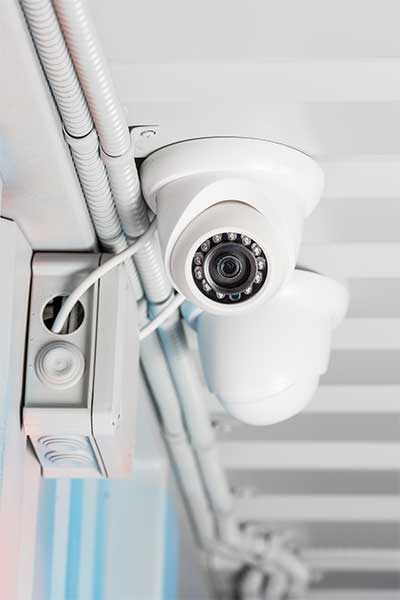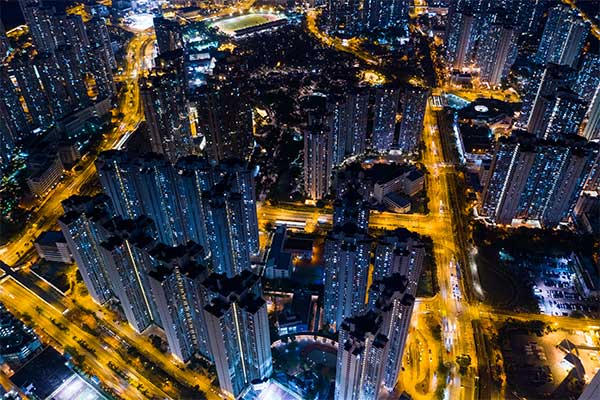As we’ve discussed a number of times in previous blogs, next generation 911 (NG911) is improving emergency response across the country. But we haven’t often discussed how its true potential is highlighted when the technology is integrated into smart city infrastructure. As more cities adopt real-time data, automation, AI-driven monitoring, and NG911—powered by next gen core services—we’re seeing the true capabilities of modern public safety.
Next gen core services are responsible for transmitting data between emergency networks which allows for 911 centers to handle text, video, IoT sensor alerts, and precise location tracking in ways traditional systems never could. But how exactly does this intersection between next gen core services and smart city technology improve emergency response? Let’s dive in and answer some of the most popular questions around smart cities and next gen core services.
One of the biggest breakthroughs we’ve had in smart cities is the ability to detect and report emergencies before anyone even picks up the phone. For example, there are:
Real-World Example:
Several major U.S. cities use ShotSpotter, an IoT-based gunshot detection system, to relay instant alerts to law enforcement. When integrated with next gen core services, these alerts can automatically trigger emergency response protocols, allowing for faster dispatch times.
 2. Can Next Gen Core Services Reduce Emergency Vehicle Delays?
2. Can Next Gen Core Services Reduce Emergency Vehicle Delays?One of the biggest challenges in emergency response isn’t anything to do with the 911 call itself, rather it’s the traffic congestion between dispatch and the scene.
When next gen core services are integrated with smart city infrastructure, traffic systems can be dynamically controlled to give emergency vehicles a clearer path. Some steps that can be controlled include:
Real-World Example:
Las Vegas has deployed smart traffic signal technology that helps emergency vehicles get through heavily trafficked areas much quicker. Their goal is to reduce response times in emergent situations. When paired with next gen core services, dispatch centers can monitor live road conditions and help redirect responders accordingly.

Texting 911 has been a huge help in emergency response for both callers and call-takers. Now we’re working together on going a step further to bring video and AI-assisted monitoring into the mix. This will allow dispatchers to:
Real-World Example:
Dubai has already implemented similar efforts. Their emergency system uses AI-powered cameras to keep an eye on crowds during big events. If trouble pops up, the response teams get real-time visuals right away, helping them figure out what to do fast.
A common challenge with legacy 911 systems is pinpointing where a caller is when they’re in a multi-story building or a crowded city area. Next Gen 911 helps resolve this challenge by combining Wi-Fi, GPS, and even smart city info to pinpoint the caller’s exact location.
There are also indoor positioning systems that help emergency crews track down callers in large places like airports or stadiums. The next gen core services pulls together data from different sources to figure out not just which building the caller is in, but the specific floor and room where the emergency’s happening.
Real-World Example:
Los Angeles installed indoor positioning technology in big buildings allowing next generation 911 to guide responders to the exact location—even inside high-rises or underground areas where GPS alone would fail.

Natural disasters are unpredictable, oftentimes hitting out of nowhere. But imagine if smart city tech teamed up with next-gen emergency services to give responders a leg up. We’re talking better prep, spotting trouble before it occurs, and jumping into action sooner.
Picture this, flood sensors pinging 911 dispatchers before streets turn into rivers. Or an earthquake warning system that fires off automatic alerts through next generation 911, giving people a heads-up to duck and cover. How about drones overhead, streaming live footage of disaster zones so rescue teams can assess the situation and find people who need help? These kinds of abilities and features are now possible with NG911 and smart city technology.
Real-World Example:
Take Japan’s earthquake warning system—it sends out alerts just seconds before the ground starts shaking. If integrated with next gen core services, these warnings could be sent straight to 911 centers, cutting down response time when every second matters.
The promise of smart cities and next generation 911 (NG911) is huge—it’s about transforming public safety into something smarter, faster, and more connected. But to make it happen, a few things need to fall into place. We need more cities to replace their legacy 911 systems and roll out next gen core services. It’s going to take stronger collaboration between the government, city planners, telecom providers, and emergency management teams.
The big question remains—is your city ready for the future of 911? If not, it’s time to start the conversation. Contact our team of next generation 911 experts to see how we can help your city.